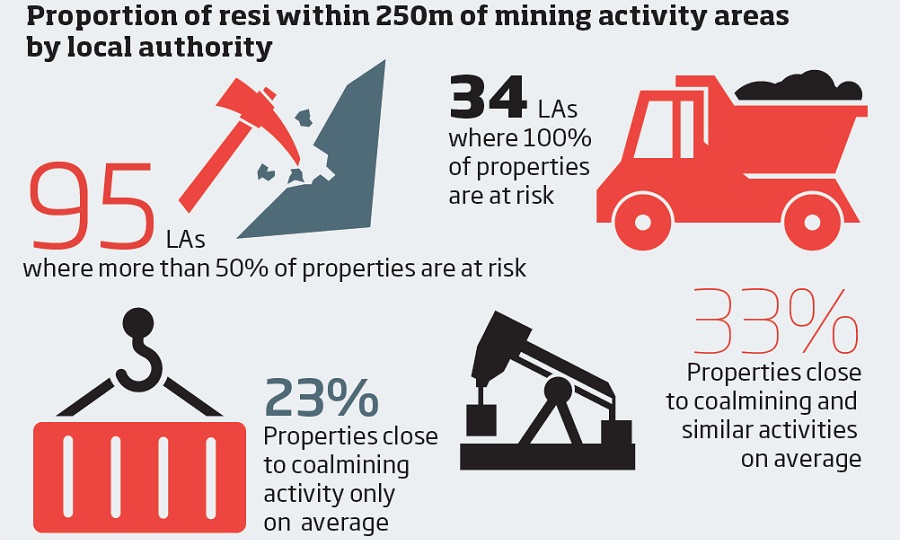By Emanuela Barbiroglio
Third of homes could be affected by historic mining activity
Almost one-third of all residential properties in England, Scotland and Wales are at risk of being affected by historic mining activity, according to a new report from Landmark Information.
It estimates that 33% of houses are built within 250m of land that might have been used for coalmining and activities such as quarrying of sand, clay and gravel pits in the past.
The report was compiled using a range of different data points such as historical mining records from the Open Government Licence v3.0 and information on land potentially contaminated by former industrial use from the Crown. In 95 local authority (LA) areas, the proportion of housing stock at risk is 50% or higher and in 34 areas 100% of housing stock is at risk from former coalmining activity, it warns.
“The risk associated with former mining [activity] is the ground stability issue and the impact this can have on property and potentially insurance,” says Chris Loaring, head of consultancy at Landmark Information. “Areas most affected depend on risk type as clearly, larger mining areas are dictated by underlying geological sequences [coal seams], and some sinkholes, for example, are caused by a specific and localised geological sequence.”

The main danger homeowners face from being within close proximity of former mining land is structural damage to housing stock caused by subsidence or heave, says Loaring.
“Old mineshafts and tunnels can collapse and damage properties above them,” he explains. “Disturbed ground and spoil tips can also be prone to settlement, which could cause structural damage to buildings. In addition, in areas of historical brine extraction and salt mining, it can leave large cavities in the ground, which have the potential to collapse or cause problems for properties built in the area.”
The worst-affected parts of the UK are the north of England, Scotland and Wales. The risk decreases significantly in London, with on average 6.5% of housing stock per borough potentially affected.
Although Loaring concedes that you can’t change the risk associated with a particular area, he says that “dependent on the type of ground stability issue, there are some management strategies you can employ, for example drain maintenance and/or tree management for shrinking or swelling clay”.























